RARE WWII June 16th 1943 USS Thomas Stone European Pacific Theater Combat Report
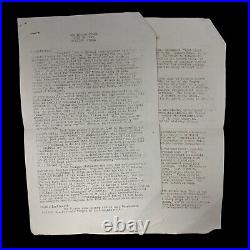
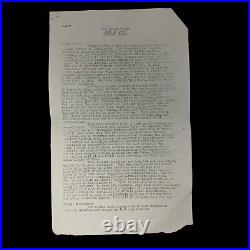

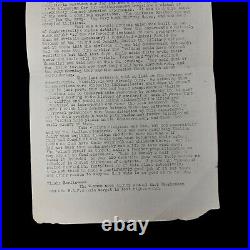
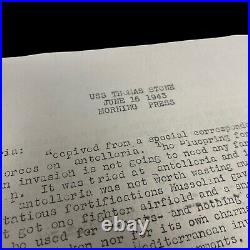
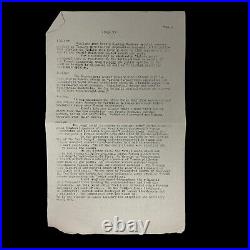
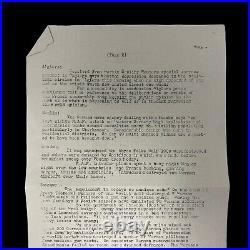
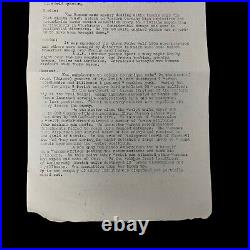
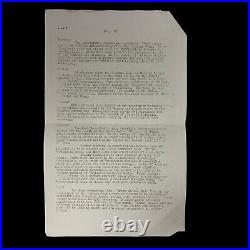

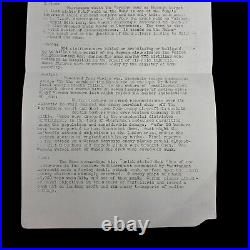
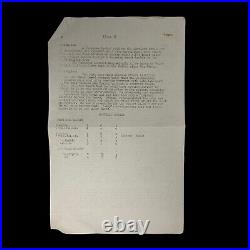
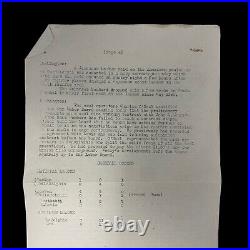
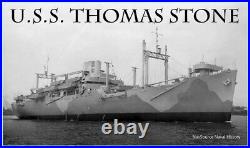
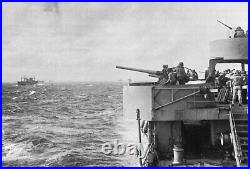

This incredibly rare and museum-grade piece of World War II history is an original combat operations report printed on June 16th, 1943 aboard the USS Thomas Stone (Windsor-Class Attack Transport). These reports contained confidential, restricted, and sometimes secret information and were more detailed with sensitive military intelligence not shared with the public press. The specific USS Thomas Stone combat press report shares a special report correspondent with the British forces on Antelleria, Italian campaign advancements, Royal Air Force night air raid on Oberhauson Germany, Folko Wulf 190s, aerial raids on France, Soviet combat advancements in the East, aerial attacks on the Ruhr, Japanese raid on Guadalcanal, etc. Full History of the USS Thomas Stone. The USS Thomas Stone was a Windsor-class attack transport that played a significant yet often understated role in the Allied operations during World War II. Commissioned in the wake of the United States entering the war, the vessel was named after Thomas Stone, a Maryland planter and a signatory of the Declaration of Independence. The USS Thomas Stone was commissioned in 1941, amid the rapid expansion of the U. Navy to meet the Axis powers' threat. As an attack transport, her primary role was to transport troops, equipment, and supplies to battlefronts, and to participate in amphibious assaults. One of the USS Thomas Stone's first significant operations was Operation Torch in November 1942, the Allied invasion of North Africa. This operation marked the first time American and British forces worked together on such a scale in the war. The Thomas Stone played a critical role in transporting and landing American troops on the D-Day beaches of Algeria. However, the operation was not without its challenges. The USS Thomas Stone ran aground on a sandbank off the Algerian coast, becoming a target for German bombers. After repairs, the USS Thomas Stone participated in the invasion of Sicily in July 1943, known as Operation Husky. The Thomas Stone was tasked with delivering soldiers to the beaches under the cover of darkness, navigating minefields, and avoiding enemy fire. The successful landing at Sicily marked a turning point in the war in Europe, opening a new front that would eventually lead to the downfall of Germany. Following Operation Husky, the USS Thomas Stone continued to support Allied operations in the Mediterranean, participating in the Salerno landings and contributing to subsequent operations in the Italian campaign. Her role underscored the importance of attack transports in projecting Allied power across contested shores. The crew of the USS Thomas Stone, like many of their contemporaries, faced myriad challenges during their service. Life aboard an attack transport was fraught with danger, not just from enemy action but also from the perils of the sea itself. The camaraderie among the crew members was a crucial element in maintaining morale during these difficult times. Letters from home, brief shore leaves, and the bonds formed in the heat of battle provided much-needed relief from the stresses of war. As World War II drew to a close, the USS Thomas Stone continued to serve, participating in the occupation efforts and repatriating U. Throughout her service life, the USS Thomas Stone embodied the versatility and resilience of the U.
Navy's support vessels, contributing significantly to the Allied victory. The legacy of the USS Thomas Stone and her crew is a testament to the critical role of attack transports in amphibious warfare. Their courage and dedication under challenging conditions exemplify the broader efforts of the United States Navy during World War II. While the battles and operations the USS Thomas Stone participated in were pivotal to the Allied war effort, the personal sacrifices and experiences of her crew remind us of the human aspect of war, marked by both adversity and heroism.
